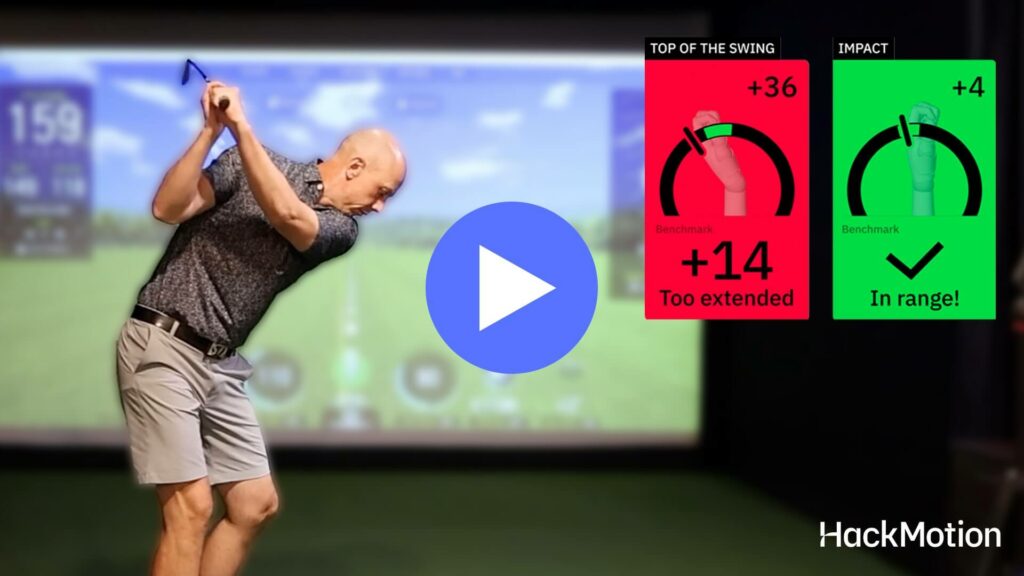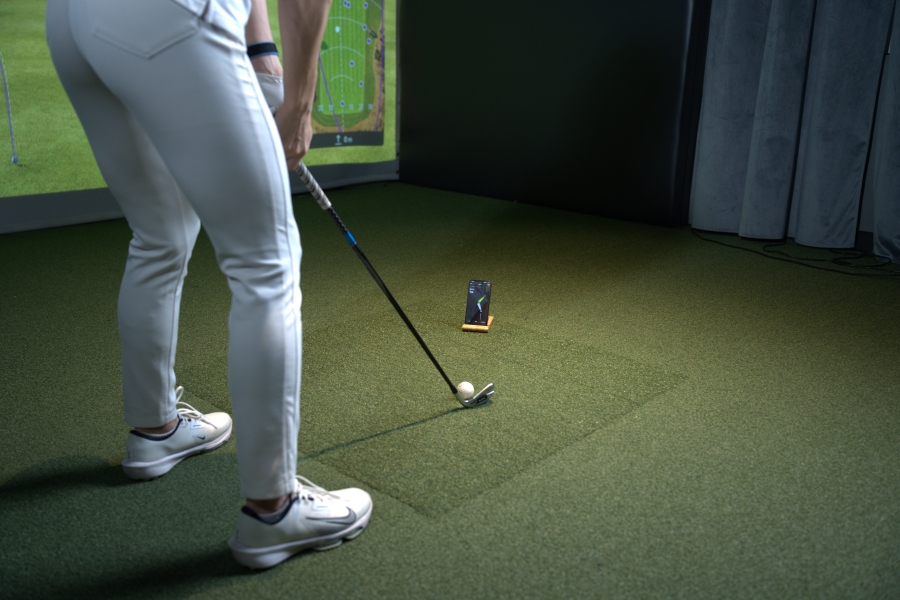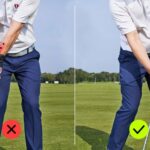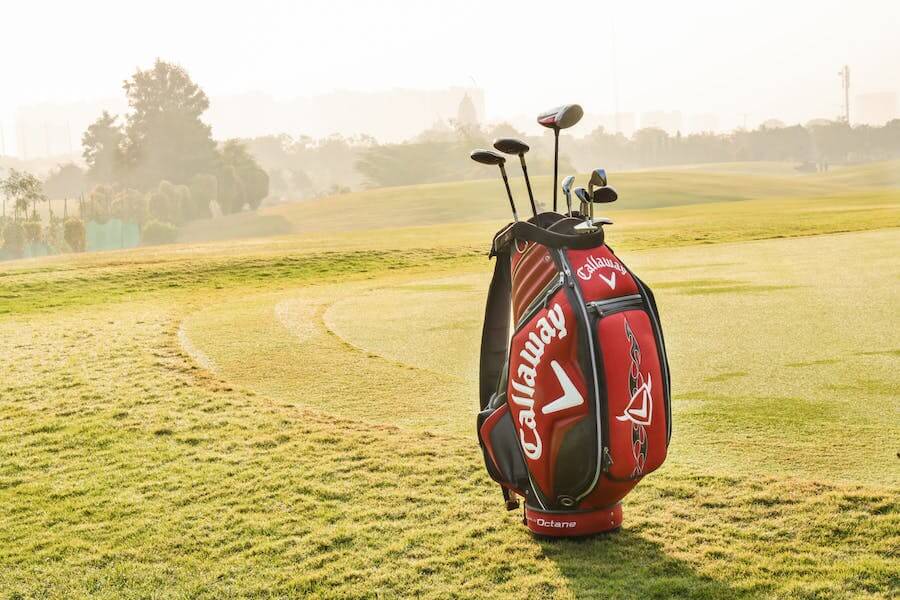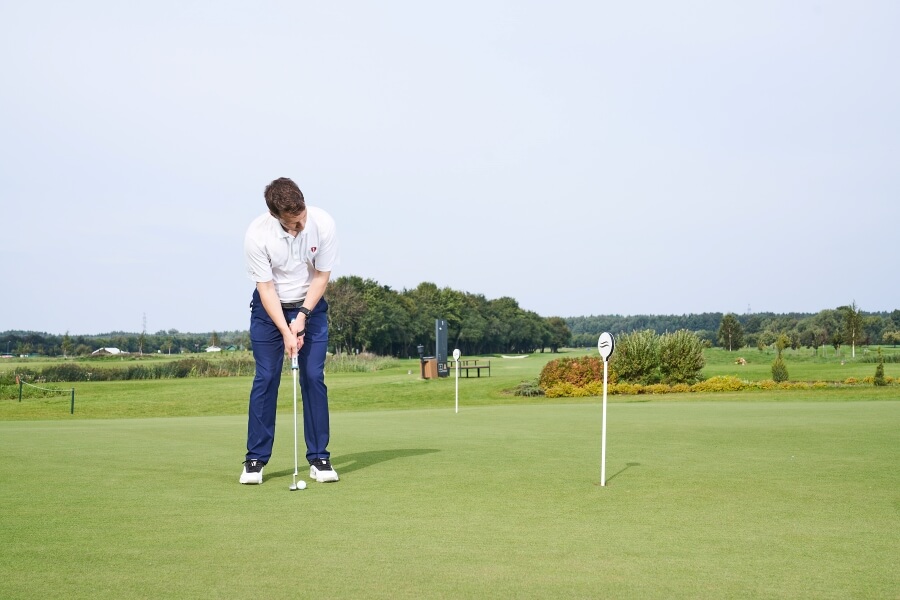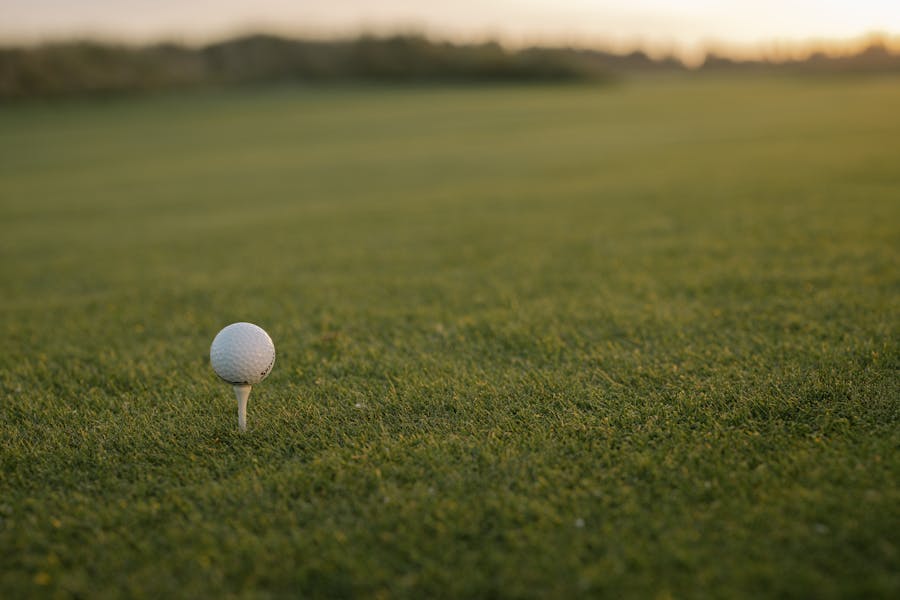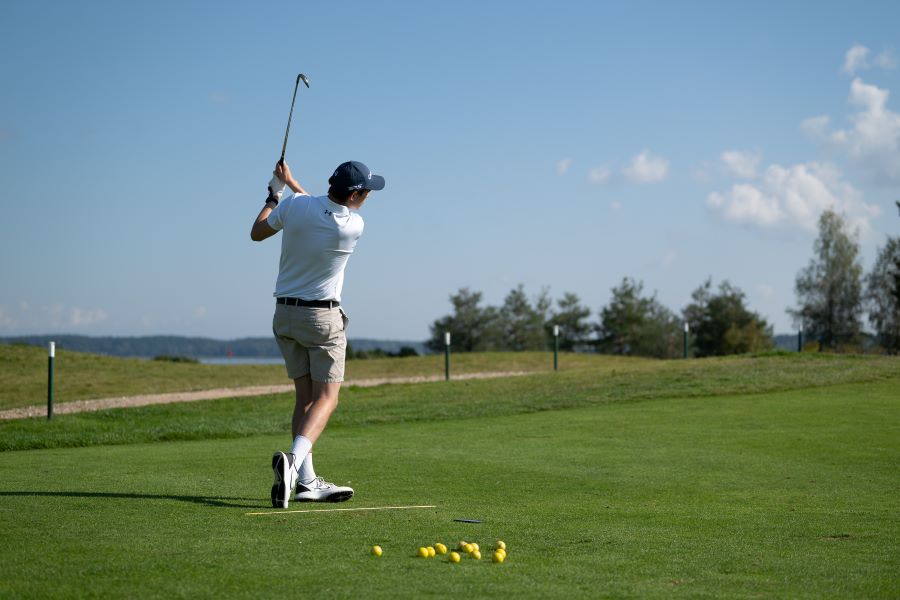Shot Dispersion in Golf: What It Is, Why It Matters, and Practical Steps to Improve It
Great players have better misses. Golf is a game of misses.
When you start missing the pin by 5 yards instead of 15 yards, your shot dispersion improves, and your handicap drops along with it.
We will take you on a deep dive into shot dispersion so you can use it to understand your game and how to start approaching your strategy on the course.
Key Takeaways
Here are a few key takeaways to understand about shot dispersion. If you don’t have time to read our entire guide, take this information with you to make some progress right away.
- Your shot dispersion is likely much wider than you realize, test yourself on the range to measure both your left/right and short/long misses.
- Great players often adjust their aim based on dispersion patterns, sometimes intentionally aiming away from the pin to give themselves the best chance to finish on the green.
- To narrow your dispersion, you must improve centered contact for distance control and stabilize the clubface at impact for direction control.
- Always consider width (how far offline your shots finish) and depth (how far short or long you miss) when evaluating your game.
Rob Cheney’s video below shares practical drills you can use to measure your patterns, tighten your shot grouping, and become a more consistent ball striker.
Contents
What is Shot Dispersion?
Shot dispersion is the average of your misses. If you have a pin 100 yards in front of you, you will aim right for it, but not all of your shots will hit the target. You will hit shots left, right, long, and short of the target.
That is your golf shot dispersion.
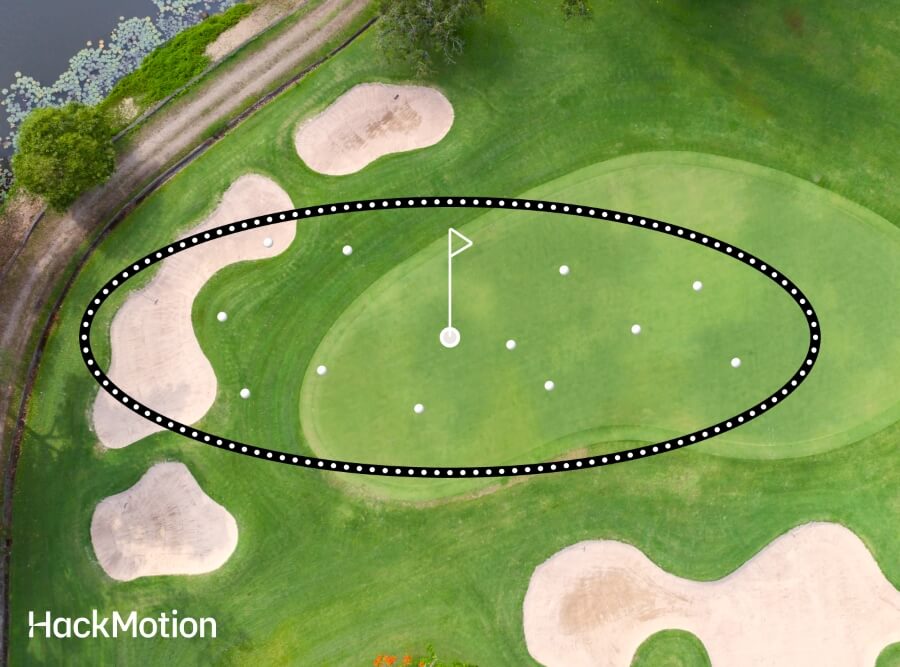
Golfers with lower dispersion ranges are more consistent and typically have lower handicaps.
When you better understand your shot dispersion, you can make smart decisions on the course.
Shot Dispersion Chart by Handicap
When looking at golf shot dispersion, you have to consider the width and depth of the shot dispersion.
- Width: Single-digit handicaps average 30 yards or less with a 7-iron, while professionals are under 15 yards total.
- Depth: Most golfers miss short more than long. Average players can see up to 30 yards of depth variation, often with many shots falling well short of the target yardage.
| Handicap Level | Approximate Dispersion Width (Yards) | Approximate Dispersion Depth (Yards) |
|---|---|---|
| Scratch (0) | 15-20 | 10-15 |
| 5 | 20-25 | 15-20 |
| 10 | 25-30 | 20-25 |
| 15 | 30-35 | 25-30 |
| 20 | 35-40 | 30-35 |
| 25 | 40-45 | 35-40 |
Why is Shot Dispersion so Important to Understand
Understanding your shot dispersion has a big impact on scoring, accuracy, and club selection. You can measure it with a launch monitor or by working on the range with a well-measured target.
If you have a launch monitor, follow these steps:
- Position the device a few feet behind and slightly to the side of the ball, as recommended by the manufacturer.
- Calibrate according to the instructions for accurate data.
- Use a consistent setup — stance, grip, posture — to remove unnecessary variables.
- Hit multiple shots with the same club (start with 20–30 using a 7- or 8-iron before moving to other clubs).
- Review the shot data for carry distance, ball speed, launch angle, and side spin.
- Check the dispersion pattern — most monitors will display it visually.
- Analyze width and depth to see how far offline and how far short/long your shots are.
- Identify tendencies — such as always missing right or consistently coming up short — so you can plan and practice accordingly.
Improving Accuracy
Paying attention to your shot dispersion shows you where your game truly needs improvement.
- If those misses are 30–40 yards off, it’s a different story, your swing mechanics and clubface control likely need work.
- If you hit 8 of 18 greens in regulation but the 10 misses were only a yard or two away, you’re closer to scoring better than you think.
Club Selection
Knowing your shot dispersion will also help you choose the right club off the tee and when approaching the greens.
Let’s say the pin is in the front of the green, and it’s 105 yards away. You hit your pitching wedge 105 yards but have a dispersion (depth) of 10 yards.
Does it make sense to hit the pitching wedge into the green?
Probably not. The 9 iron is your 115-yard club with a dispersion of 10 yards; this leaves you with a perfect shot a little long and a slightly less-than-perfect shot that could go in the hole.
This type of thinking on the golf course is something that most amateurs need to be doing.
Lowering Scores
Finally, if you can recognize that you have an issue with shot dispersion and then make adjustments to club selections and decisions on the course, you will lower your scores.
When your misses are closer to the hole, you score better. Think about hitting shots that miss but are still on the green instead of being in the water or a bunker.
Factors Influencing Shot Dispersion
Several elements affect how tight (or wide) your shot pattern is. Understanding these will help you focus your practice on what matters most.
Handicap Level
- Lower handicaps generally have tighter dispersion and smaller misses.
- Experienced players know their typical miss (e.g., 5–10 yards left) and plan accordingly.
- Higher handicappers often don’t know which way their miss will go — learning this is a key turning point.
Club Selection
- Dispersion changes with the club in your hand — longer clubs = wider dispersion.
- Example: A 15-yard miss with a driver might still be in the fairway, but with a wedge, that same miss could land you in a bunker.
- Even with a putter, a “miss” should be inches, not feet.
Course Conditions
- Wind, firmness, and rough height can increase dispersion.
- Dry, firm greens require more spin and control; wet, receptive greens can help hold shots.
- Expect your dispersion to grow when playing harder courses, like major championship setups.
Mental Game
- Hazards, pressure, and scoring situations can change your dispersion.
- On the range with no consequences, you may hit it straight. On the course, trouble can cause tension and altered swings.
- Confidence and trust in your shot shape reduce these pressure-induced misses.
To narrow your misses and improve your aim patterns, work with an experienced golf instructor who can help you build more reliable impact fundamentals.
How to Decrease Golf Shot Dispersion
Tightening your shot pattern is the fastest way to give yourself more birdie looks and avoid costly mistakes.
The key is to use equipment that fits, build a repeatable setup, and keep the clubface stable through impact.
- Play clubs that fit your swing, the right shaft, loft, and head design make a big difference.
- Repeat your setup every time, feet, hands, shoulders, and hips should be in the same position for each shot.
- Control the clubface, proper wrist angles at setup, top, and impact are essential for straighter shots.
Golf Shot Dispersion on Course Example
When you look at a hole like this one with bunkers surrounding the front and the left side, it’s important to consider your dispersion.
Let’s look at the average dispersion of a golfer with a 7 iron approaching this green.
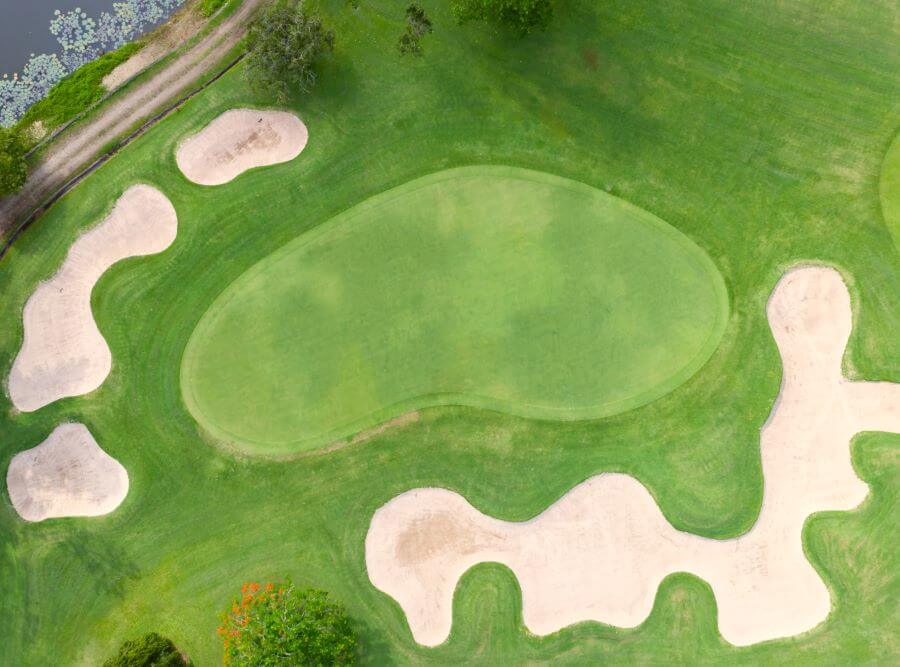
An average golfer will have a dispersion area of about 30 yards.
For that golfer to aim directly at the pin, the shot that misses left will be well off the green. If you can move that golf ball over just a little and aim for the pin, almost all misses could be on the green.
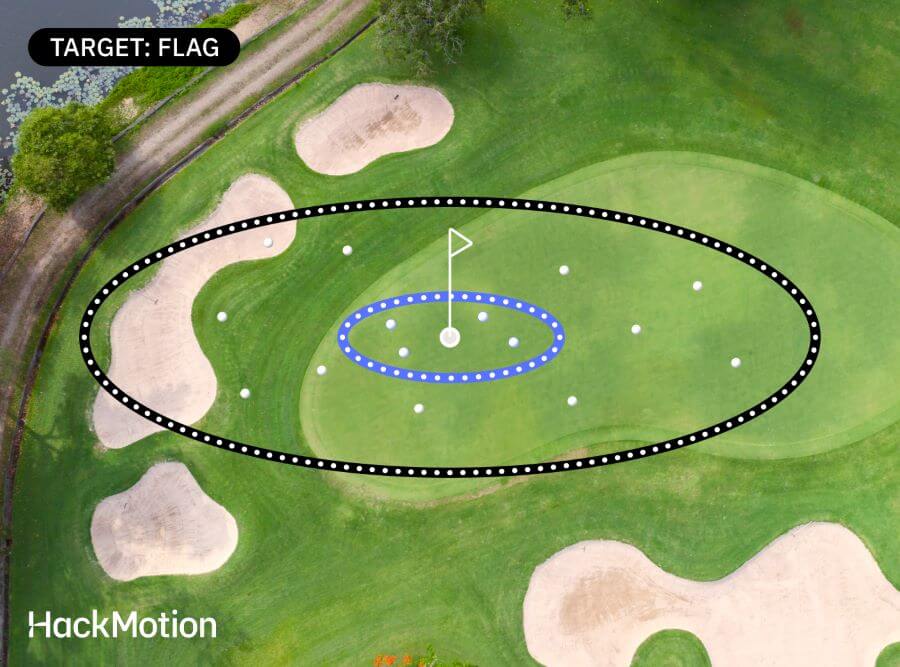
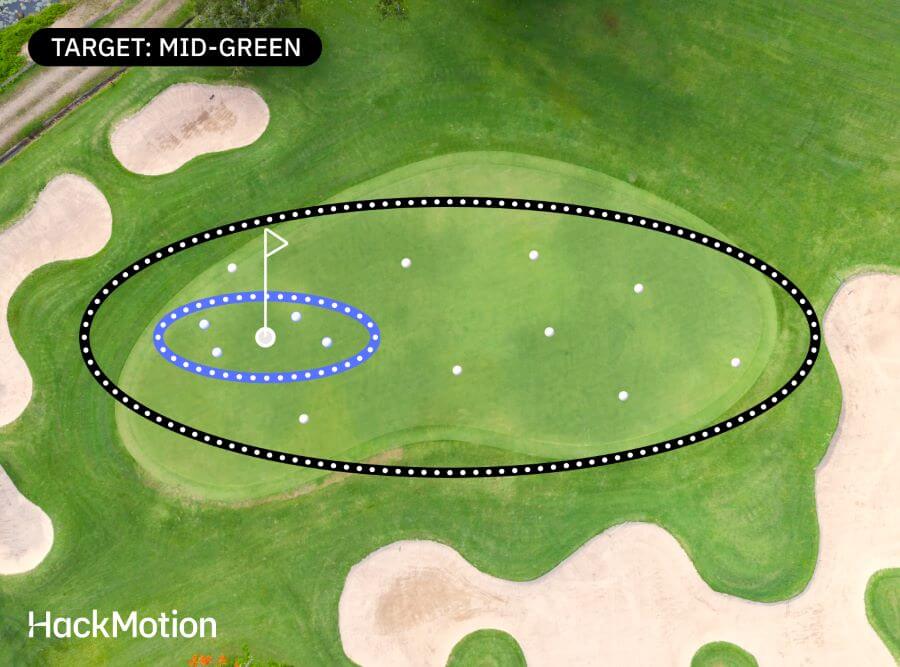
Golfers who aim at the pin don’t necessarily make more birdies. In fact, they often make higher numbers than the golfers who go for the center of the green.
Even professionals do not always aim at the pin.
The other thing to consider is depth.
Coming up short here isn’t an option. Instead, it’s best to go one club up and fly it a little over the center of the green, just enough to keep the ball in the grass.
Learning your carry distances, understanding your dispersion data and practicing with the HackMotion to deliver a square clubface angle is the best strategy.
Three Drills to Help Improve Shot Dispersion
If you want to hit more greens and keep your misses closer to the target, try these three drills from Rob Cheney.
Each one focuses on a different element of shot dispersion — distance control, strike quality, and clubface stability.
Distance Control Game
A fun, competitive way to work on depth control and eliminate long/short inconsistencies. You can do this alone or with a practice partner.
Distance Control Game – Step by Step
- Pick a club and a target distance (e.g., 6-iron at 180 yards).
- Hit 5–10 shots toward the target.
- For each shot, note the carry distance and calculate how far it was from the target distance.
- Add up the differences — a lower total means better distance control.
- Focus on smooth, center-face contact rather than maximum distance.
Gate Drill for Centered Contact
This drill improves strike quality by training you to deliver the clubhead through a narrow “gate” without making contact with the obstacles.
Gate Drill for Centered Contact – Step by Step
- Place two soft objects (gloves, headcovers, or towels) just wider than your clubhead.
- Set up to the ball with the “gate” centered on your target line.
- Make swings through the gate without hitting the obstacles.
- Start with a wider gate if needed, then narrow it as you improve.
- Keep the same smooth tempo you’d use on the course.
Punch-Finish Straight-Arm Drill
This drill helps stabilize the clubface through impact to reduce left/right misses without losing distance.
Punch-Finish Straight-Arm Drill – Step by Step
- Set up normally to your target.
- Hit shots with the intention of finishing with both arms straight and a shorter follow-through.
- Minimize wrist hinge after impact to keep the clubface square longer.
- Track how far each ball finishes from your target line.
- Aim to tighten your left/right dispersion with each practice session.
Final Thoughts
Shot dispersion in golf is a factor that all players should be paying attention to. Your approach to the golf course should change considerably when you understand the range of where your golf shots can end up.
If you want to decrease your dispersion, use HackMotion to understand how to control the clubface.
Delivering a square clubface to the golf ball takes a bit of time and practice, but it’s the key to a lower handicap.

